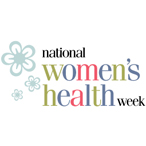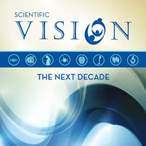Because of a lapse in government funding, the information on this website may not be up to date, transactions submitted via the website may not be processed, and the agency may not be able to respond to inquiries until appropriations are enacted.
The NIH Clinical Center (the research hospital of NIH) is open. For more details about its operating status, please visit cc.nih.gov.
Updates regarding government operating status and resumption of normal operations can be found at OPM.gov.
News & Updates
NICHD research aims to improve understanding of diseases and conditions that affect women.
NICHD Director Dr. Diana Bianchi shares some thoughts about joining NICHD.
NICHD needs your input for NIH’s All of Us program.
Dr. Cathy Spong became NICHD’s acting director on October 1, 2015. Here she shares her plans for the year and her thoughts on what makes NICHD so unique.
A pelvic floor disorder (PFD) occurs when the muscles and connective tissue of the pelvis weaken or are injured. The most common types of PFDs are urinary incontinence (leaking of urine), fecal incontinence (leaking of stool), and pelvic organ prolapse (a condition in which the pelvic organs descend into the vagina).
Throughout May, the NICHD highlighted important information about women’s health, particularly women’s health research. These efforts coincided in part with National Women’s Health Week, from May 11 to 17.
Lisa M. Halvorson, M.D., has been named the new Chief of the Gynecologic Health and Disease Branch (GHDB), effective June 15, 2014, announced Dr. Catherine Spong, M.D., Director of the Division of Extramural Research.
Two surgical treatments for a form of pelvic hernia affecting women have similar rates of success and safety, scientists in a National Institutes of Health research network have found. A guided exercise therapy to strengthen pelvic muscles did not add to the benefits of either surgery.
As National Women’s Health Week (May 12 to 18) gets underway this year, the NICHD takes stock of 15 years of research on diagnosing, preventing, and treating PFDs—a groups of conditions that particularly affect women.
On December 5, 2012, the NICHD released the Scientific Vision: The Next Decade, the culmination of a collaborative process that began in 2011 to identify the most promising scientific opportunities for the Institute and the research community to pursue over the next decade. The Vision statement was made available during the NICHD’s 50th anniversary colloquium.
Alan Guttmacher, M.D., Director of the Eunice Kennedy Shriver National Institute of Child Health and Human Development (NICHD) announced a number of changes to streamline the institute’s organizational structure and accelerate the exchange of scientific ideas.
A document charting a research course for the many collaborators who share an interest in promoting the science concerning human development through the life span, child health, women's health, and rehabilitation research is now available online.
As the Institute marks its golden anniversary, we look back on the NICHD's early years, its scientific accomplishments, and its future.
Oral medication for treating a type of incontinence in women is roughly as effective as Botox injections to the bladder, reported researchers who conducted a National Institutes of Health clinical trials network study, with each form of treatment having benefits and limitations.
Surgery to repair pelvic organ prolapse often carries a risk of incontinence. To avoid scheduling a second surgery, some women may opt to have a second procedure to reduce incontinence at the time of their prolapse repair surgery.
During their lifetimes, many women will face a wide array of health issues. Some will seek treatment for gynecological conditions, such as endometriosis and uterine cancer. Others will experience conditions that affect both males and females, but that follow a different course in women, such as heart disease. Women's health is also affected by factors like socioeconomic status and race/ethnicity, sometimes in ways that they cannot control directly.
Nearly 24 percent of U.S. women are affected with one or more pelvic floor disorders, report researchers funded by the National Institutes of Health. Their analysis is the first to document in a nationally representative sample the extent of pelvic floor disorders, a cluster of health problems that causes physical discomfort and limits activity.
By performing two surgical procedures during the same operation, researchers in an NIH network reduced by half the incidence of urinary incontinence in women with a condition known as pelvic organ prolapse.













 BACK TO TOP
BACK TO TOP